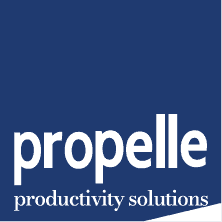The digital era has revolutionised the way businesses manage their documents. Gone are the days of cumbersome file cabinets or file servers with folders and more folders. In their place, Document Management Systems (DMS) have risen, promising a streamlined, accessible, and secure approach to digital document handling. Among the myriad of options available, SharePoint and traditional DMS stand out. But which one is the right fit for your business? Let’s delve into the nuances of each to help you make an informed decision. SharePoint vs DMS, here goes.
SharePoint, a Microsoft brainchild, is an integrated suite of tools designed to enhance collaboration and efficiency across organisations. It’s a versatile platform that supports document management but extends its reach to intranet services, workflow automation, and even custom application development. SharePoint’s integration with Microsoft 365 means it can leverage the power of familiar tools like Word, Excel, and Teams, creating a cohesive and user-friendly environment.
Traditional DMS platforms focus on the core functionalities required to manage documents: storage, retrieval, indexing, and sometimes version control. These systems are engineered to replace physical filing systems with digital ones, providing a centralised repository for documents that can be accessed and managed electronically.

One of SharePoint’s most significant advantages is its integration with Microsoft 365, allowing for a seamless workflow between document management and other productivity tools. This integration facilitates a level of efficiency that traditional DMS may struggle to match, as they often operate as standalone systems or require custom integrations to work with other business tools. Software integration can impact business processes and efficiencies, and not to mention the sneaky additional costs. DMS’s often leave people adding documents to the system as an afterthought, not during the authoring process, which risks content never being added.
Collaboration is at the heart of SharePoint. It allows multiple users to edit documents concurrently, track changes, and even communicate via embedded chat features. Traditional DMS platforms typically handle collaboration through a check-in and check-out document library. This will prevent simultaneous editing and slow down collaborative efforts due to limited access to documents.
SharePoint’s architecture is designed for customisation which allows you to adapt it to your business operations. Businesses can develop their own applications within the platform, tailor sites to specific department needs, and scale the services as the organisation grows. Traditional DMS solutions, while effective, often offer limited customisation options, which can be a drawback for businesses with unique or evolving requirements.
SharePoint’s powerful search functionality is a game-changer, enabling users to quickly locate documents based on content types, metadata, and even custom search criteria. Traditional DMS platforms may offer basic document search capabilities, and they often lack the advanced features that SharePoint brings to the table.
Security is paramount for any document management solution – just think about all the sensitive documents you have filed away. SharePoint and traditional DMS platforms take security seriously, offering various levels of user permissions and access controls. Compliance requirements can be complex and ever changing. However, SharePoint often leads the way in compliance, with Microsoft’s commitment to meeting global standards and regularly updating the platform to reflect the latest regulations. As regulatory requirements are unique to every industry, you will need to consider the right option for security and compliance throughout a document lifecycle.

Your business teams heavily rely on collaboration and requires a platform that can support complex teamwork.
You’re already invested in the Microsoft ecosystem and want to maximise that investment.
You anticipate the need to scale your document management system as your business grows.
Your document management needs are straightforward, without the need for extensive collaboration.
You prefer a system that’s easy to deploy with minimal training requirements.
Your budget is limited, and you need a solution that provides the basics without additional frills.

Effective document management systems are key to all businesses. Choosing between SharePoint and a traditional DMS depends on a myriad of factors, including your business’s size, needs, compliance and growth trajectory. SharePoint is a robust, feature-rich platform ideal for businesses looking for an all-in-one solution that not only manages documents but also enhances collaboration and productivity. On the other hand, a traditional DMS might be the way to go for those seeking simplicity, ease of use, and a more focused document management approach. Whichever path you choose, ensure it aligns with your business objectives and is flexible enough to adapt to the ever-changing digital landscape.

© 2024 Propelle Pty Ltd